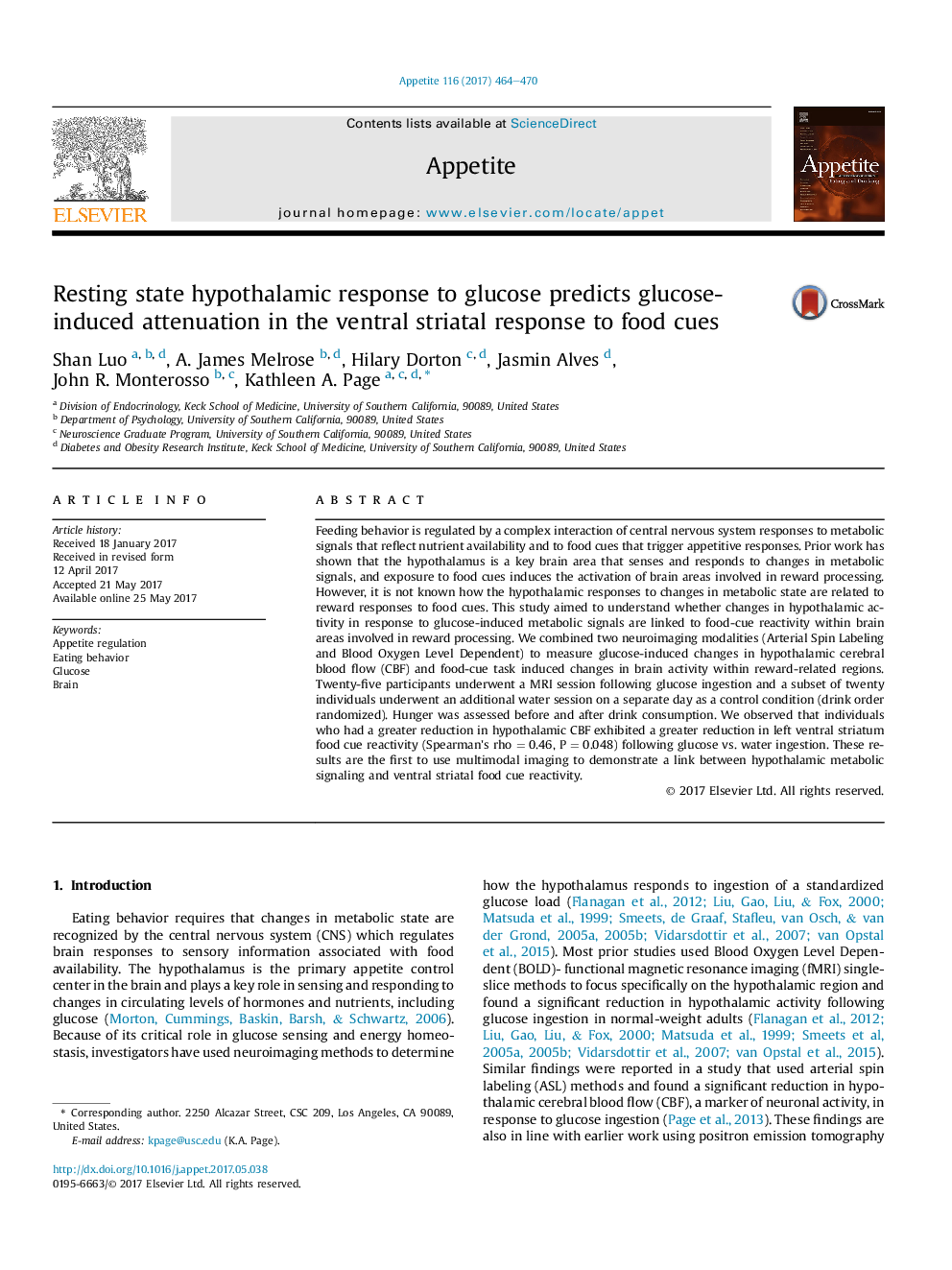| کد مقاله | کد نشریه | سال انتشار | مقاله انگلیسی | نسخه تمام متن |
|---|---|---|---|---|
| 5044028 | 1475364 | 2017 | 7 صفحه PDF | دانلود رایگان |
Feeding behavior is regulated by a complex interaction of central nervous system responses to metabolic signals that reflect nutrient availability and to food cues that trigger appetitive responses. Prior work has shown that the hypothalamus is a key brain area that senses and responds to changes in metabolic signals, and exposure to food cues induces the activation of brain areas involved in reward processing. However, it is not known how the hypothalamic responses to changes in metabolic state are related to reward responses to food cues. This study aimed to understand whether changes in hypothalamic activity in response to glucose-induced metabolic signals are linked to food-cue reactivity within brain areas involved in reward processing. We combined two neuroimaging modalities (Arterial Spin Labeling and Blood Oxygen Level Dependent) to measure glucose-induced changes in hypothalamic cerebral blood flow (CBF) and food-cue task induced changes in brain activity within reward-related regions. Twenty-five participants underwent a MRI session following glucose ingestion and a subset of twenty individuals underwent an additional water session on a separate day as a control condition (drink order randomized). Hunger was assessed before and after drink consumption. We observed that individuals who had a greater reduction in hypothalamic CBF exhibited a greater reduction in left ventral striatum food cue reactivity (Spearman's rho = 0.46, P = 0.048) following glucose vs. water ingestion. These results are the first to use multimodal imaging to demonstrate a link between hypothalamic metabolic signaling and ventral striatal food cue reactivity.
Journal: Appetite - Volume 116, 1 September 2017, Pages 464-470
